Archaeology
The Brick Store Museum is a founding partner of the Cape Porpoise Archaeological Alliance, fostering archaeological research and learning in southern Maine.
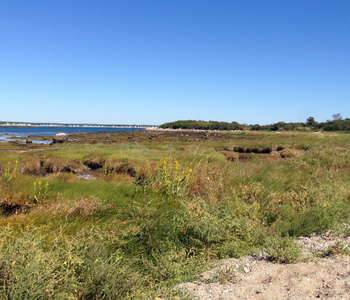
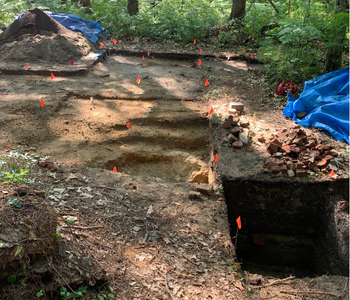
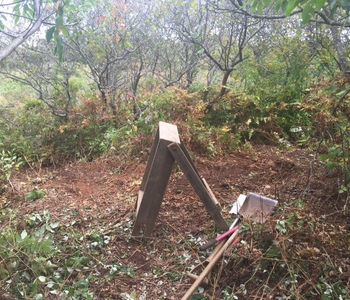
About our Work
Archaeological studies provide valuable insights into our history, much like other artifacts and archives—but these objects first require a “dig” to unearth them. While archaeological work in Kennebunk has been ongoing for decades, a significant initiative began in 2017 when the Brick Store Museum teamed up with the Kennebunkport Conservation Trust (KCT), Tim Spahr (Principal Investigator/Archaeologist), and Gemma Hudgell (Consulting Archaeologist) to establish the Cape Porpoise Archaeological Alliance (CPAA). The CPAA’s research focuses on the islands and intertidal zones off Cape Porpoise Harbor, areas already impacted by sea level rise.
This project is part of the Museum’s broader mission to preserve Kennebunk’s cultural heritage through the research and identification of archaeological sites, burial sites, historic buildings, and structures. The Museum serves as a repository for artifacts discovered during regional archaeological investigations, offering curation and interpretation through Exhibitions and Educational Programs.
Looking ahead, the Museum aims to deepen its understanding of the region’s history, from the earliest occupations to the 21st century—each period offering immense historical value. Archaeology uncovers rich narratives, shedding light on Indigenous peoples, minority cultures, and everyday lives whose stories remain untold. Only by examining the full scope of our past can we truly appreciate the blend of traditions and lifestyles that shape our present and future.
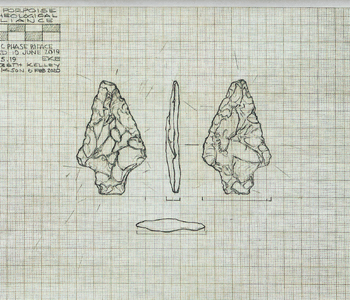
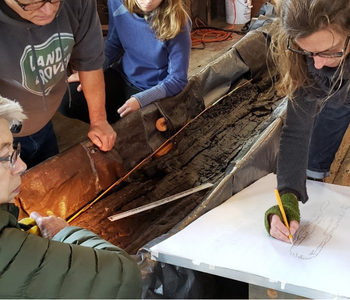
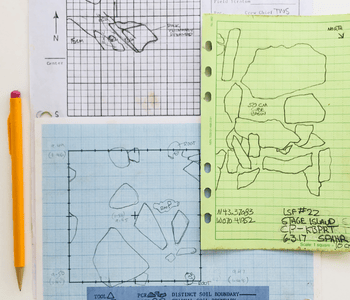
Tools to
Learn More
Indigenous Tribes of Southern Maine
Indigenous peoples have inhabited the land we now call Maine for at least 13,000 years. The People of the Dawnland (or Wabanaki), including the Eastern Abenaki (specifically the Almouchiquois), Mi’kmaq, Maliseet, Penobscot and Passamaquoddy nations lived and traded here. This town’s name, “Kennebunk,” is derived from the Abenaki word for “long water place” (sometimes referenced as “long cut bank”), referring to the sharp embankment at the mouth of the Mousam River (Great Hill).
For the websites of Wabanaki nations, please start here. To explore a map of tribal nations, visit Native Land.
Southern Maine Archaeology Resource
The Southern Maine Archaeology Resource (SMAR) is a digital education tool on the Museum’s website which explores archaeological work in southern Maine, and the processes used to learn from the past. This tool is intended for use by the public, students and educators who are interested in local archaeological work and processes.
Just History Database
The Just History Database is another research tool on the Museum’s website which highlights people that lived here who were historically marginalized. They include Black, Indigenous, and other People of Color, many of whom we will never know. Hours of volunteer research has uncovered several hundred people whose stories are still fragmentary and uncertain. This Database helps to illustrate the diverse history of our region.
Winter Archaeology Forum
The Cape Porpoise Archaeological Alliance (CPAA), of which the Museum is a part, presents an annual forum at the Museum’s Program Center, typically in March. The Forum typically welcomes archaeology and history professionals and educators from throughout the State of Maine to speak on current trends in archaeology. CPAA Principal Investigator Tim Spahr leads the series of speakers to explore current work in Southern Maine and answer audience questions.
Visit the Museum’s Calendar to learn more about upcoming offerings.
Further Information
Did you find something?
If you have discovered a pre-historic or historic object or feature (i.e. cellar hole, foundation, etc.), please contact the Brick Store Museum for more information at (207) 985-4802. The Museum works closely with archaeologists at CPAA and the State of Maine Historic Preservation Office.
In the meantime, you are encouraged not to remove items from the ground or from original locations until an archaeologist can arrive to document the piece, as location and context is very important to this work.
About the Museum Collections
Maine has a rich prehistoric and historic heritage spanning thousands of years. Indigenous peoples have inhabited the land we now call Maine for at least 13,000 years.
The Brick Store Museum’s archaeological collections contain artifacts that represent some local Indigenous history as well as settler history. Unfortunately, for the majority of these artifacts, the sites from which they were recovered is unknown, and this limits what we can learn from them. When artifacts are recovered without proper archaeological investigation, significant information is lost.
Volunteer
If you would like to be notified of project opportunities and/or trainings with the archaeology team, please email info@brickstoremuseum.org with the subject line “Archaeology Volunteer” and list your name, age, and contact information, with any relevant experience (not required).
Support Archaeology Projects
Are you looking to support this work? Archaeology and preservation requires significant funding due to the resources involved. Your help is always needed. If you would like to donate toward the Archaeology program, please contact Alex Fletcher at afletcher@brickstoremuseum.org or (207)985-4802.
